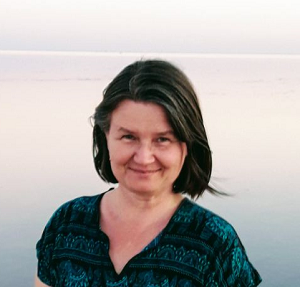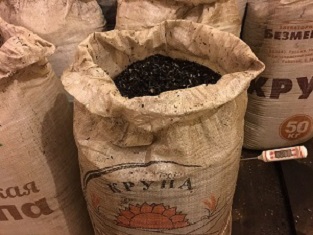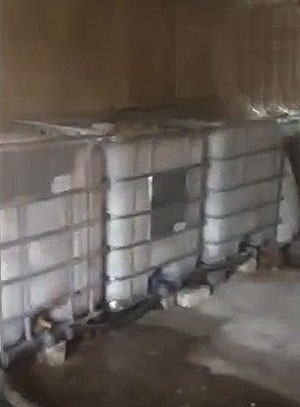
The method of heat treatment of raw materials using hot water is called hot water pasteurization.
In my country, the term hydrothermy is adopted, from the words “hydro” (water) and “thermo” (temperature).
Table of Contents
The preparation of the substrate for oyster mushrooms by the hydrothermal method takes place in a container or barrel from 1 to 6 cubic meters.
The substrate, which is in one cubic meter of container, is used for 25-28 mushroom substrate blocks weighing 10-11 kg.
First, dry raw materials are soaked in a tank or barrel (in a container).
You pour dry raw materials not very tightly into polypropylene bags, tie them up. And put it in a tank. Then fill with water.
It is easiest to work with sunflower husks, as they do not need to be crushed and contain fewer mold spores.
If you can't find it, take chopped straw with 5-7% bean hay, or a mixture of straw with a little husk.


I do not recommend experimenting with complex plant compositions in hydrothermia.
Different plant materials need different modes of soaking and steaming. You cannot create the ideal mode for each component when mixing.
Therefore, you are more likely to have substrate overgrowth defects during incubation.
You will be using a lot of water.
Approximately 750 liters of water are required for each cubic meter of the container, in which bags of raw materials are already placed.
We need so much water to completely cover the bags of raw materials.
And the layer of water above the bags should be at least 10cm.
If the sides of the bags stick out of the water, they will not be able to steam well and there will be spots when the mycelium is overgrown.
It depends on the properties and structure of the raw material. You must set this time by experience.
The substrate after hot water pasteurization should have a moisture content of 67-69%
If the substrate is dry (less than 66%) - the yield will be low due to the lack of nutrient solution for growing mushrooms.
If the substrate is too wet (more than 70-71%) - this provokes the growth of bacteria and mold during the growth of mycelium. Ugly mushrooms may also form.
You can try.
Water must be passed through a sieve (filter) so that large debris and mud foam settle. And then use this purified water for heat treatment of raw materials.
But as soon as defects appear during the overgrowth of the mycelium, the reuse of water will have to be abandoned.
 The low cost of equipment is an undoubted advantage of this technology.
The low cost of equipment is an undoubted advantage of this technology.
All you need is an insulated iron tank with a lid for hydrothermal treatment.
Place an iron grate at a height of 10-15 cm from the bottom, you will put bags of raw materials on it. The grid cells will be 10 by 10 cm or so.
You can also use a plastic water tank like in the photo. This container is suitable if you fill the raw materials immediately with hot water.
Electricity is rarely used to heat water, it is too expensive. For a 2 cubic tank, for example, the power of the heating elements must be at least 40 kW.
To heat the same container with gas, you need about 25 cubic meters.
You can also heat water with wood.
To do this, an iron tank must be placed on brick walls in order to burn firewood under the tank.
You make this structure like a furnace - on the one hand you lay firewood, on the other hand you put a pipe to create traction.
There are two ways:
1. You put dry raw materials in bags into the tank and immediately fill it with hot water. The water temperature is 85-90C. This method is described in detail here.
2. You pour warm water at 25-30C, and after a certain time you heat it up.
You must always measure the temperature in the center of the raw material bag. It should be within 70-72 degrees. The water may be hot, but the raw material may be at a lower temperature than necessary.
Once you have fixed the temperature of 70-72C in the raw material, maintain it for 3-4 hours for sunflower husk substrate and 7-8 hours for straw-hay and/or husk mixture. If your tank is well insulated, you don't need to heat up the water.
The longer it stays in bags, the more various microorganisms multiply in it. And definitely - these microorganisms are not friends for oyster mushroom mycelium.
Some mushroom growers pour cold water into the tank after draining the hot water - to quickly cool the substrate.
I don't recommend this way.
Moisture changes uncontrollably with a sharp decrease in temperature. Condensation appears in the substrate. This liquid after inoculation flows into the corners of the bag.
I've read on mushroom forums that rinsing with cold water frees the raw material from readily available mold food.
But this is impossible!
If this "nutrition" did not dissolve in hot water, and did not go away with this water when drained, how can cold water wash these substances away? This is not dirt on a concrete path to wash it off ...
